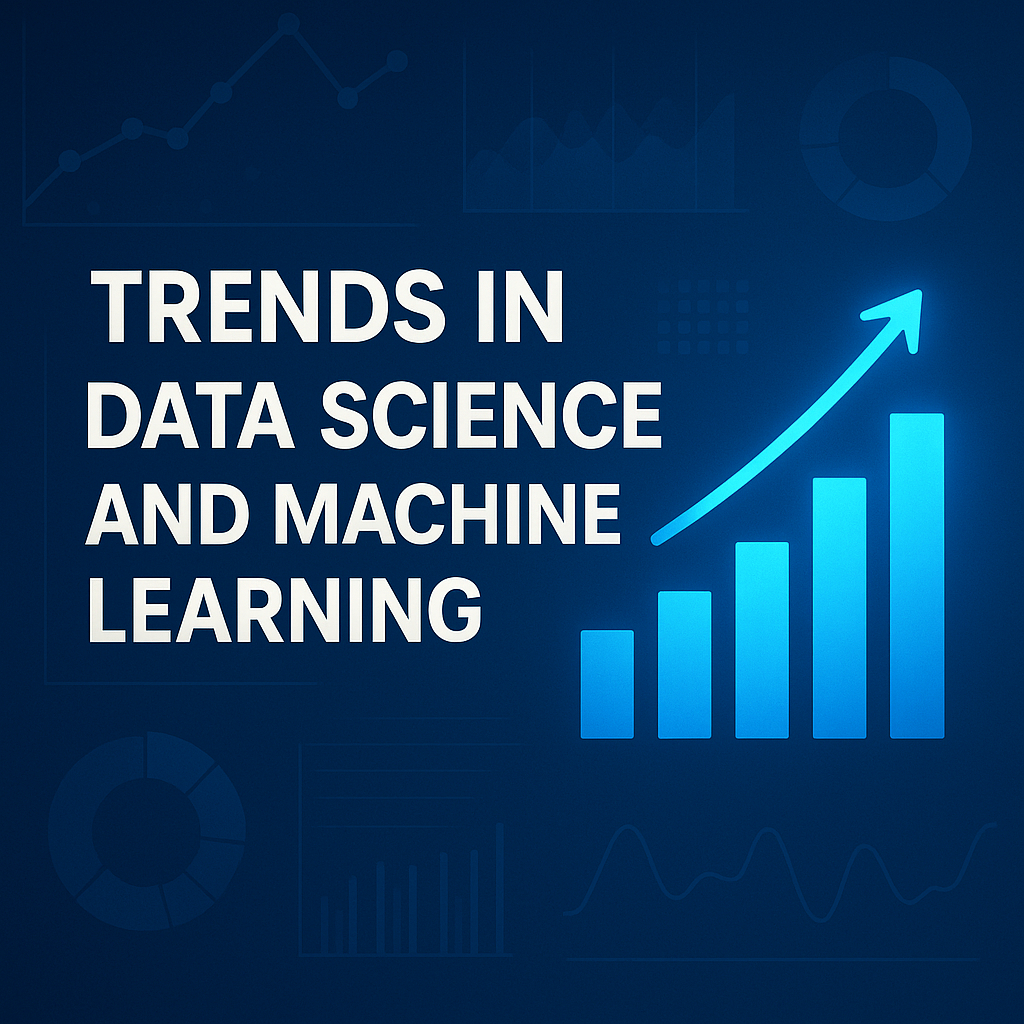Current Trends in Data Science and Machine Learning

The current trends in data science are reshaping our digital world at an unprecedented pace. Businesses are generating an astonishing 2.5 quintillion bytes of data every single day, creating both challenges and opportunities for organizations worldwide.
Furthermore, the landscape of data science technologies continues to evolve rapidly. The future of machine learning looks particularly promising as organisations report exponential productivity gains, with more than half of businesses achieving significant efficiency improvements from AI implementation. However, despite these advancements, most professionals lack the required skills.
Understanding the Foundations of Data Science and Machine Learning
To truly grasp the current trends in data science, we must first understand the foundations upon which this dynamic field is built. Data science emerged in the early 1960s as a profession dedicated to interpreting large volumes of data. It combines statistical methodology with computer science to make useful predictions and gain insights across various domains.
Data science consists of several interconnected components. Statistics form the backbone, enabling analysts to uncover patterns and test hypotheses with confidence. Data engineering focuses on collecting and transforming raw information into usable formats.
Machine learning itself comprises three fundamental components:
- Representation: How the model views and structures data
- Evaluation: Methods for differentiating good models from poor ones
- Optimisation: Processes for finding the most effective models
The learning approaches in machine learning vary based on application needs. Supervised learning uses labelled data where input-output relationships are known, making it ideal for classification and prediction tasks. Unsupervised learning works with unlabeled data to identify patterns independently. Meanwhile, reinforcement learning trains through trial and error, with models improving based on rewards and penalties.
Initially separate disciplines, data science and machine learning now exist in a symbiotic relationship. Much of what drives advanced AI applications comes from machine learning, which involves large language models that analyse vast amounts of input data to discover patterns. Anyone pursuing a Data Science and Machine Learning Course today must master these foundations before exploring cutting-edge applications. Many institutions, including the IIT Madras Data Science Course, emphasise these core principles as the building blocks for more advanced study.
As these fields continue to evolve, understanding their fundamental components remains crucial for anyone looking to navigate the latest trends in data science and emerging trends in ML.
Current Advancements in Machine Learning and Data Science
Machine learning and data science continue to evolve at a remarkable pace, transforming industries worldwide. The field has moved well beyond basic algorithms into sophisticated systems that mimic human cognition and reasoning.
Natural Language Processing (NLP) has seen dramatic improvements, with models now capable of understanding context, sarcasm, and nuanced human emotions in text. These systems demonstrate near-human levels of comprehension, making interactions with chatbots and digital assistants more natural than ever. Anyone pursuing a Data Science and Machine Learning Course would find these advancements particularly fascinating.
Deep learning has likewise advanced significantly, especially through Convolutional Neural Networks (CNNs) and Recurrent Neural Networks (RNNs). CNNs excel at processing visual information, making them ideal for image recognition systems, while RNNs are designed to understand sequential data, powering speech recognition and human language generation.
Moreover, the healthcare sector has experienced a substantial transformation through machine learning integration. AI algorithms now analyse vast datasets to identify patterns that humans might overlook, enabling earlier disease detection and personalised treatment plans. These applications demonstrate why a data science and machine learning course emphasises practical applications alongside theory.
Quantum Machine Learning represents another frontier, solving complex problems much faster than traditional computers. This breakthrough holds particular significance for fields requiring massive data processing, such as climate modelling and drug discovery.
Notably, as AI becomes more integrated into critical decision-making, the importance of ethical AI and transparency has grown. Consequently, significant progress has been made in developing explainable AI algorithms that provide clear insights into how decisions are made—crucial for maintaining trust in AI systems.
The current trends in data science also include smaller, more efficient language models as sustainable alternatives to resource-intensive larger models. These smaller models often outperform larger counterparts when trained on diverse datasets, opening possibilities for edge computing and IoT applications.
Emerging Trends and Future Challenges
- TinyML is gaining popularity for deploying machine learning on low-power devices like sensors and IoT systems.
- Enables data processing at the edge, close to the data source.
- Especially relevant for those enrolled in a Data Science and Machine Learning Course aiming for real-world, low-latency applications.
- Quantum Computing offers the potential to process massive datasets far faster than traditional systems.
- It could revolutionize fields like drug discovery, cryptography, and AI due to its exponential processing power.
- Augmented Reality (AR) and Virtual Reality (VR) are transforming data visualization.
- Allow immersive interaction with complex datasets.
- Beneficial in sectors like healthcare and engineering, where spatial data interpretation enhances decision-making.
Conclusion
Data science and machine learning are driving today’s technological innovation, transforming industries and opening vast career opportunities. With the explosion of data, traditional methods fall short, prompting the rise of advanced ML systems capable of human-like reasoning. Despite challenges like cultural resistance and implementation hurdles, businesses are ramping up AI investments for improved decision-making and efficiency.
Emerging trends such as TinyML, quantum computing, and AR/VR are redefining how we process and visualize data, making it crucial for professionals to stay updated. However, issues like AI’s “black box” nature, skill shortages, and growing data privacy concerns continue to pose challenges.






